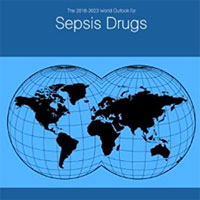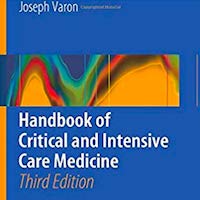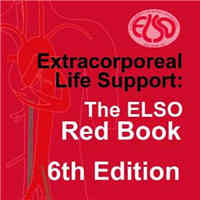Tag: treatment
The 2018-2023 World Outlook for Sepsis Drugs
This study covers the world outlook for sepsis drugs across more than 190 countries. For each year reported, estimates are given for the latent demand, or potential industry earnings (P.I.E.), for the country in question... read more

Evaluation of early administration of simvastatin in the prevention and treatment of delirium in critically ill patients undergoing mechanical ventilation
Delirium in critically ill patients is associated with poor clinical outcomes. Neuroinflammation might be an important mechanism in the pathogenesis of delirium, and since simvastatin has anti-inflammatory properties it might... read more
Predictors of Intubation in Patients With AHRF Treated With a Noninvasive Oxygenation Strategy
In patients with acute hypoxemic respiratory failure breathing spontaneously, the respiratory rate was a predictor of intubation under standard oxygen, but not under high-flow nasal cannula oxygen or noninvasive ventilation.... read more
Discharge Instructions for VTE: A Comprehensive Approach to Medication Management
Discharge instructions for VTE have typically included medication management recommendations related to the use of warfarin. In recent years, however, a growing number of alternatives to warfarin, such as direct oral anticoagulants... read more
I survived sepsis eight times. But can care workers spot this deadly illness?
Care staff are increasingly likely to see sepsis, but there is no standard training to make them aware of the symptoms to look out for in clients. There is a golden hour for the treatment of sepsis, when someone can be saved... read more
When Do Confounding by Indication and Inadequate Risk Adjustment Bias Critical Care Studies?
In critical care observational studies, when clinicians administer different treatments to sicker patients, any treatment comparisons will be confounded by differences in severity of illness between patients. We sought to... read more
Enhancing Recovery From Sepsis
Survival from sepsis has improved in recent years, resulting in an increasing number of patients who have survived sepsis treatment. Current sepsis guidelines do not provide guidance on posthospital care or recovery. In the... read more
The Fallacy of Time-to-Intervention Studies
We are barraged by time-to-intervention studies (door-to-balloon time, time-to-antibiotics, door-to-needle, etc.). However, it must be kept in mind that these studies are purely correlational in design. Such studies cannot... read more
Potentially Modifiable Risk Factors for Long-Term Cognitive Impairment After Critical Illness
Long-term cognitive impairment is common in survivors of critical illness. Little is known about the etiology of this serious complication. We sought to summarize current scientific knowledge about potentially modifiable... read more
Delay Within the 3-Hour Surviving Sepsis Campaign Guideline on Mortality for Patients With Severe Sepsis and Septic Shock
The guideline recommendations showed that shorter delays indicates better outcomes. There was no evidence that 3 hours is safe; even very short delays adversely impact outcomes. Findings demonstrated a new approach to incorporate... read more
Effect of Individualized vs Standard Blood Pressure Management Strategies on Postoperative Organ Dysfunction
Effect of Individualized vs Standard Blood Pressure Management Strategies on Postoperative Organ Dysfunction Among High-Risk Patients Undergoing Major Surgery. Among patients predominantly undergoing abdominal surgery who... read more
Antimicrobials for the Treatment of Drug-Resistant Acinetobacter Baumannii Pneumonia in Critically Ill Patients
This Bayesian network meta-analysis demonstrated the comparative effectiveness of fifteen antimicrobial treatments for drug-resistant A. baumannii pneumonia in critically ill patients. For survival benefit, SUL appears to... read more
Trends and Patterns of Antibiotic Consumption in China
The consumption of antibiotics is a major driver in the development of antimicrobial resistance. This study aims to identify the trends and patterns of the total antibiotic consumption in China’s tertiary hospitals from... read more
Cisatracurium Ups Some ARDS Outcomes Versus Vecuronium
Among patients with acute respiratory distress syndrome (ARDS), cisatracurium does not improve mortality versus vecuronium but is associated with improvements in other outcomes, according to a study published online in the... read more
Elevated BNP Levels in CFS Associated with Cardiac Dysfunction
This study confirms an association between reduced cardiac volumes and brain natriuretic peptide (BNP) in chronic fatigue syndrome (CFS). Lack of relationship between length of disease suggests that findings are not secondary... read more
Clinicians’ Expectations of the Benefits and Harms of Treatments, Screening, and Tests
Clinicians rarely had accurate expectations of benefits or harms, with inaccuracies in both directions. However, clinicians more often underestimated rather than overestimated harms and overestimated rather than underestimated... read more
Effect of Antibiotic Prophylaxis on Surgical Site Infections Following Removal of Orthopedic Implants
In this randomized clinical trial that included 470 patients who were undergoing surgery for removal of orthopedic implants used for treatment of below-the-knee fractures, surgical site infection occurred in 12.9% of patients... read more
The Iatrogenic Potential of the Physician’s Words
Some of the information that physicians convey to their patients can inadvertently amplify patients' symptoms and become a source of heightened somatic distress, an effect that must be understood by physicians to ensure optimal... read more
A Research Agenda for Communication Between Health Care Professionals and Patients Living With Serious Illness
Poor communication by health care professionals contributes to physical and psychological suffering in patients living with serious illness. Patients may not fully understand their illness, prognosis, and treatment options... read more
Endoscopic Treatment versus Shunting for Hydrocephalus
In sub-Saharan Africa, a large number of infants are affected by hydrocephalus that develops after neonatal ventriculitis and is often associated with poor developmental outcomes. New research findings are summarized in a... read more
Dietitians in Critical Care
Patients in the critical care setting are at risk of malnutrition. The provision of nutrition support (enteral or parenteral) to critically ill patients is vital, but achieving the optimum quantity and balance is a contentious... read more
Inpatient antiviral treatment reduces ICU admissions among influenza patients
Administering inpatient antiviral influenza treatment may reduce admissions to the ICU among adults hospitalized with flu, according to a study presented at ID Week 2017, an infectious diseases meeting. While interventions... read more









